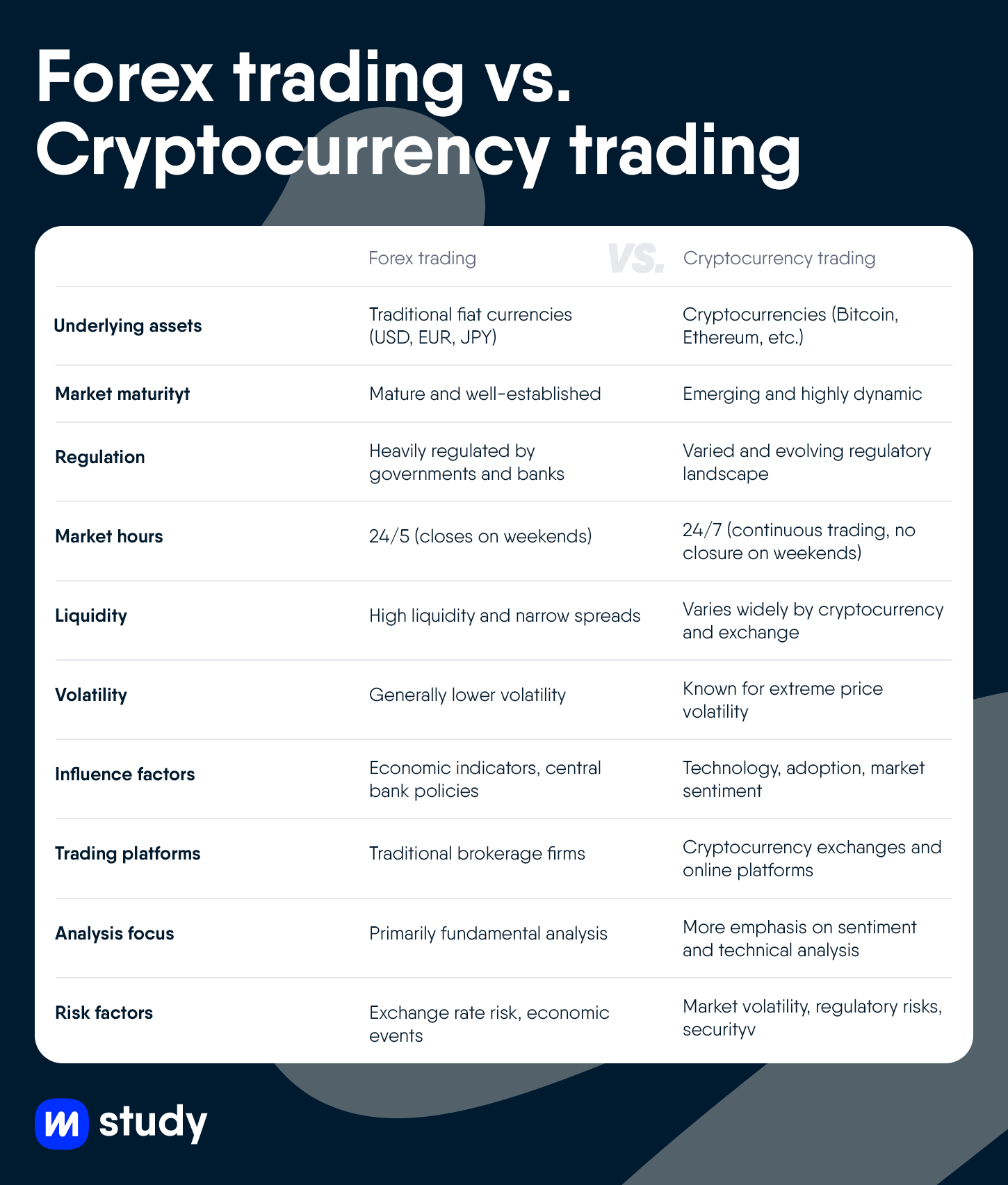Forex Trading and Its Mechanism
Cryptocurrency Trading and Its Working Principle
Forex or foreign currency trading is a financial activity involving the simultaneous buying and selling of currencies to generate profits. It deals with the exchange of fiat currencies and remains active 24 hours a day on weekdays. Major financial cities like London, New York, Tokyo, and Sydney host the trading sessions. In a currency pair like EUR/USD, EUR is the base currency, and USD is the quote currency.
In Forex, traders analyze the currency value through three analyses—fundamental, technical, and sentiment. Fundamental analysis delves into economic and political conditions such as GDP growth and interest rates. Technical analysis utilizes historical data to identify trends, while sentiment analysis gauges market attitude through various mediums. Leverage is commonly used in forex to control larger positions with limited capital, necessitating risk management strategies to mitigate losses.
Cryptocurrency Trading and Its Working Principle
Cryptocurrency trading is the buying and selling of digital currencies aiming to secure profits. This trade is conducted on cryptocurrency exchanges, with pairs like BTC/ETH representing Bitcoin and Ether exchange. Traders rely on technical, fundamental, and sentiment analyses to predict currency movements. A plethora of trading strategies, including day trading and long-term investing, are used, emphasizing the importance of security and digital wallets to protect funds due to the highly volatile nature of cryptocurrencies.
Various trading strategies, robust risk management, and regulatory considerations are crucial in navigating the intricate landscape of cryptocurrency trading.

Contrasting Forex and Cryptocurrency Trading
While Forex trading is characterized by stability, liquidity, and well-established practices, trading cryptocurrencies is known for innovation and immense return potentials. Forex focuses on traditional currencies like USD and EUR, regulated by governments and central banks. The forex market is renowned for its liquidity and tight spreads. Economic indicators significantly influence forex trading, with traders mainly speculating on currency pairs like EUR/USD.
Conversely, cryptocurrencies, decentralized digital assets running on blockchain technology, form the core of cryptocurrency trading. The markets are notably young, volatile, and distinct from traditional fiat currencies.
Risks in Forex Trading
Forex trading is fraught with various risks such as exchange rate risk, leverage risk, interest rate risk, economic event risks, and broker risks. Fluctuations in exchange rates can lead to losses, and the use of leverage can amplify losses. Interest rate variations and economic events can also considerably affect currency values. Traders need to select reputable brokers to avoid potential fraud and unethical practices.

Cryptocurrency Trading Risks
Cryptocurrency trading is laden with risks including price volatility, regulatory alterations, security threats, liquidity concerns, and technology vulnerabilities. Prices can change abruptly, leading to substantial gains or losses. Regulatory discrepancies among countries can affect market availability and liquidity. Traders need to enforce stringent security measures to prevent theft and fraud. Limited liquidity can hinder the execution of large trades, while technology issues can impact a cryptocurrency’s utility and value.
In conclusion, while Forex and cryptocurrency trading both provide avenues for profit, they are inherently different in their working mechanisms, focus, and associated risks. Forex is centered around traditional, government-regulated currencies and is known for its stability and liquidity. On the other hand, cryptocurrency trading is relatively new, focusing on decentralized digital assets and is characterized by high volatility and substantial returns. Traders need to be well-informed and cautious while navigating through the varied risks present in both trading domains.
